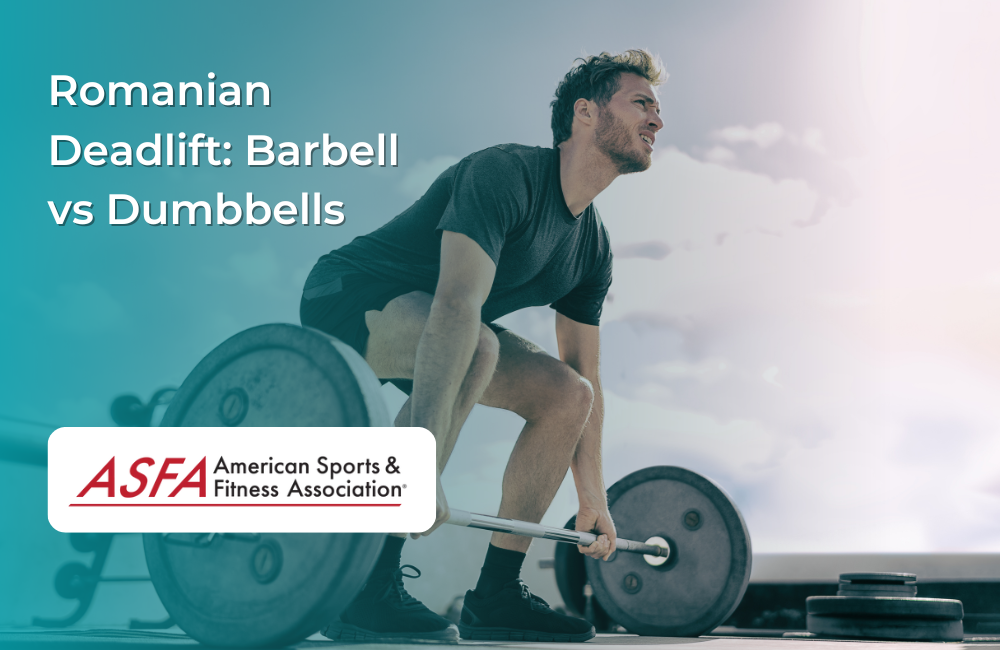The Romanian deadlift (RDL) is a strength-training exercise that primarily targets the hamstrings, glutes, and lower back. Unlike a conventional deadlift, the RDL focuses more on hip hinging with a controlled range of motion, making it a highly effective movement for developing posterior chain strength and flexibility. It can be performed using either a barbell or dumbbells, each offering unique benefits and considerations.
Romanian Deadlift: Barbell vs Dumbbells - Key Differences
Understanding the RDL Movement
The Romanian Deadlift (RDL) is a foundational exercise in strength training, known for its effectiveness in targeting the hamstrings, glutes, and lower back muscles. To perform the RDL correctly, start by standing with your feet shoulder-width apart, toes pointing forward. Hold a dumbbell or barbell with an overhand grip, ensuring your hands are shoulder-width apart. It’s crucial to maintain a neutral spine and engage your core muscles to support your lower back throughout the movement.
Begin the exercise by hinging at your hips, slowly lowering the weight towards the floor while keeping your knees slightly bent. Focus on using your hips and glutes to control the descent, rather than relying on your lower back. Keep the weight close to your body to maintain balance and avoid swinging or jerking motions.
As you reach the bottom of the movement, pause briefly to feel the stretch in your hamstrings. Then, drive your hips forward and use your glutes to lift the weight back to the starting position. Throughout the entire movement, keep your core engaged and your back straight to ensure proper form and prevent injury.
The RDL is highly effective for building strength and muscle mass in the hamstrings, glutes, and lower back. It also enhances grip strength and can be adapted to different fitness levels and goals. Proper form and technique are essential to maximize the benefits of the exercise and minimize the risk of injury.
When comparing dumbbell and barbell RDLs, dumbbells offer a greater range of motion and can be adjusted to suit various fitness levels. They also engage additional arm and shoulder muscles, making them ideal for targeting multiple muscle groups. Conversely, barbell RDLs allow for lifting heavier weights and are safer for dropping, making them suitable for those aiming to build maximal strength.
Ultimately, the choice between dumbbell and barbell RDLs depends on your personal preferences, fitness level, and specific workout goals. Both variations are effective for building strength and muscle mass, but it’s crucial to use proper form and technique to achieve the best results.
Grip Strength and Load Distribution
A barbell provides a fixed grip, allowing for more weight to be lifted and more balanced weight distribution. This makes it ideal for strength progression and increasing overall muscle activation. Dumbbells offer greater range of motion and flexibility in grip positioning, which can be beneficial for individuals with mobility restrictions or imbalances.
Range of Motion and Muscle Groups Activation
Dumbbell deadlifts allow for a deeper stretch at the bottom of the movement, leading to greater hamstring engagement. A barbell, however, maintains a consistent center of gravity, making it easier to control throughout the movement while focusing on maintaining proper hip hinge mechanics.
Core and Stability Requirements
Dumbbells require more stabilization since each hand moves independently, leading to increased core and grip activation. Barbell deadlifting provides more overall stability, enabling lifters to lift heavier weights while focusing on posterior chain development and building overall strength.
Strength and Progressive Overload
A barbell is easier to progressively overload, making it the preferred choice for those focusing on maximum strength and hypertrophy. Dumbbells, while still effective for muscle growth, are more limited in terms of max load but allow for unilateral training to correct imbalances.
Convenience and Accessibility
Dumbbells are more accessible for home workouts and require less setup, making them a choice for those training in limited spaces. Dumbbells offer greater range of motion and flexibility in grip positioning, which can be beneficial for individuals with physical limitations, mobility restrictions, or imbalances. A barbell requires more equipment and space but provides better potential for heavy lifting and structured progression.
When to Use a Barbell or Dumbbells
A barbell is ideal for those prioritizing strength and heavier loads, as well as individuals working on powerlifting or Olympic lifting movements. Dumbbells are a great choice for improving mobility, correcting muscle imbalances, and increasing range of motion. Beginners or those with injury concerns may find dumbbells easier to handle with lighter weight, allowing them to develop proper form and technique before progressing to heavier loads, while more advanced lifters benefit from using a barbell to lift heavier and progressively overload.
Conclusion
Both barbell and dumbbell Romanian deadlifts are effective for developing posterior chain strength and flexibility. A barbell allows for greater strength gains through progressive overload, while dumbbells offer increased range of motion, mobility, and unilateral development. Incorporating both variations into a training routine can maximize muscle activation and improve overall movement mechanics.
FAQs
Which is better for hamstring development?
Dumbbells allow for a deeper stretch, engaging the hamstrings more, while barbell deadlifts enable heavier loading for strength progression and are highly effective in building overall strength.
Should beginners use dumbbells or a barbell for RDLs?
Dumbbells are often easier for beginners due to better control and a reduced risk of improper form, especially when compared to lifting heavy weights with a barbell, which can be challenging and increase the risk of injury if proper form isn't maintained.
Can I alternate between barbell and dumbbell RDLs?
Yes, incorporating both variations helps improve overall posterior chain strength and correct muscle imbalances.
How much weight should I use for RDLs?
Start with a manageable weight that allows for controlled movement, prioritizing form before increasing load.
Do Romanian deadlifts help with flexibility?
Yes, RDLs improve hamstring flexibility by emphasizing controlled stretching and hip hinge mechanics.





